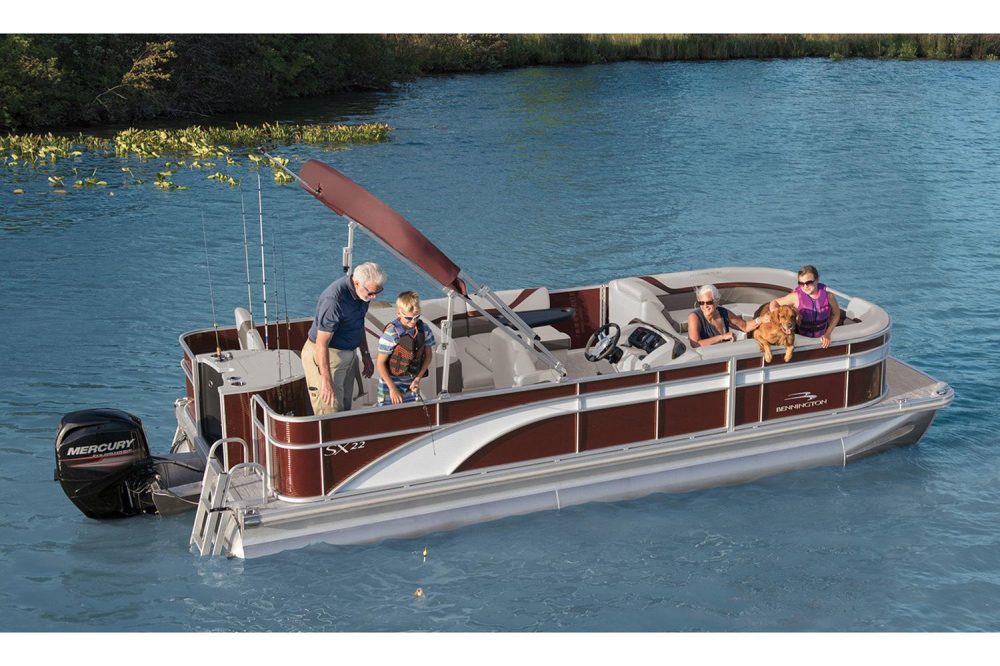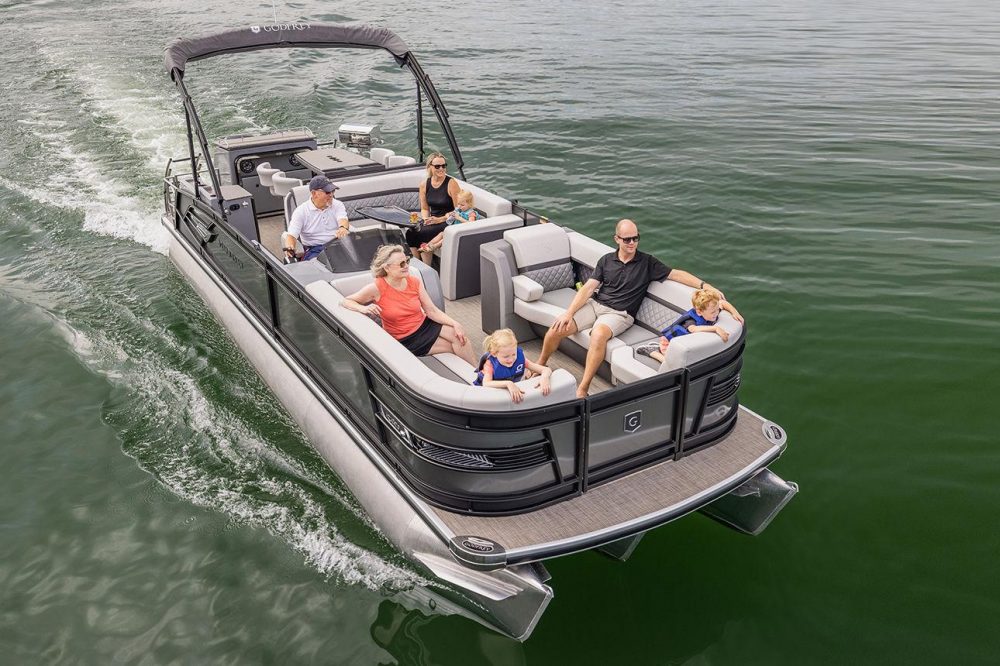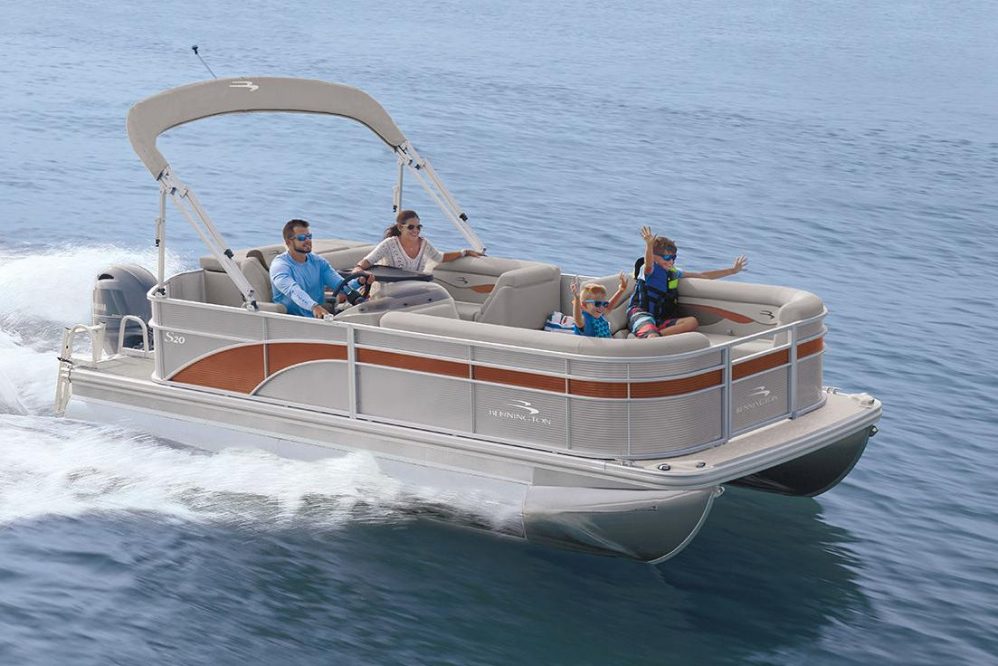Pontoon Boats: The Ultimate Guide
A deep dive into the basics of pontoon boats exploring the ins and outs of this boat class.
If you haven't been hiding under a dock somewhere, you're probably aware that pontoon boats are currently experiencing a significant resurgence. But what is the reason for all the hype? With advancements in pontoon tube design and boat building materials, improvements in outdoor fabrics, and the availability of lighter and more efficient outboard engines, pontoon boats have surpassed their previous reputation of being slow and unwieldy "party barges." Are you contemplating whether a pontoon boat is suitable for your needs, or are you still perplexed about pontoon tube design? Let's explore the basics of pontoons and examine the particulars of this boat category.

Overview
A pontoon boat is a vessel with a large, flat deck mounted on two or more metal tubes called pontoons. Boats that have three pontoons are sometimes called “tri-toons.” These pontoons — or “tubes” for short — hold reserve buoyancy and allow designers to create massive deck plans with accommodations like oversized lounge areas, stand-up bars, and sun pads. Advances in tube design have also allowed builders to increase the amount of horsepower on the pontoon's stern.

Construction and Design
Your basic pontoon boat has two simple round tubes that taper to a point at the forward end. Fuel tanks reside inside the tubes or in the boat's stowage areas.The tubes are usually constructed from welded sheets of marine-grade aluminum. Deck support channels and cross beams are welded atop the tubes. Cross beams are the support structures where the pontoon’s deck is mounted. The support channels give the pontoon its rigidity, which is key to the ride and feel of the boat.
Most builders choose plywood covered with carpet or vinyl material for the deck. Aluminum fencing and side panels are installed around the deck's perimeter before the seats, lounges, helm unit, mechanical systems, electrical systems, and other interior components are added. Lastly, the pontoon boat receives its engine or engines before it's rolled off the factory floor.
When purchasing a pontoon boat, you'll want to inquire about any warranties covering tubes, deck, and other components. It is also worth researching materials and construction. Start with questions like “how do you waterproof and treat the deck?” and “how are the support structure and tubes engineered?" The quality of the materials, craftsmanship, and engineering will directly influence the quality of the boat and how long it will last.
Types of Pontoon Boats
Pontoons are popular among boaters interested in activities like watersports and fishing. While you can find plenty of pontoons in coastal regions, they’re largely concentrated on inland lakes, rivers, and reservoirs. Let’s take a look at the top pontoons for these activities and waterways.
Performance Pontoon Boats

If you’ve got a need for speed, a pontoon with lots of horsepower on the stern might just be your ticket. These “rocketoons,” as they're referred to, can have as many as 900 ponies. And, with
">the right performance pontoon package, you’ll be carving turns at high speeds. Consider the Premier Dodici 310 or the Bennington 30 Club Twin for starters. The Dodici has three 300-horsepower Evinrude E-TEC, two-stroke outboards, and a top end of 60 MPH. Not to mention, it has a pub layout with a full stand-up bar and lounge seating. The Bennington Club twin has twin 300-horsepower Yamaha F300s, 300 square feet of deck space, and a 50 MPH top end. You’ll find no shortage of excuses to go fast in this category.
Watersports Pontoon Boats
While you can easily tow tubers, skiers, and wakeboarders on any pontoon with enough horsepower and a towing pole or mount, there’s also a class of pontoons that are designed specifically designed for these watersports. They typically have metal sports arches with towline mounts, brackets for boards and skis, and splashy graphics and interiors.
Today, many watersports pontoons have integrated tech options that allow for additional controls. These options free up vessel-owners to partake in the fun, cuts down on hassle, and streamline the process of getting watersports rolling. For example, Malibu pontoons offer digital vessel control and a power sport tower with remote control.
The Aqua Patio AP 250 XP is a watersports speed demon, equipped with a 350-horsepower Yamaha F350 four-stroke outboard. It’s also got a watersports tower, under-deck board stowage, and a sporty aesthetic that looks great at 60 MPH.
Luxury Pontoons

">Luxury pontoons are all about comfort. Think sumptuous, buttery upholstery and seating arrangements that make you feel like you're lying on a cloud. Top-end models have joystick steering, twin engines, oversized chaise lounges, full stand-up bars, LED lighting, and fencing schemes. Popular luxury pontoons include the Harris FloteBote Crowne 250, Premier Sunsation 270 Walk-On, and the Premier 290 Grand Entertainer.
Fishing Pontoons
Pontoon boats make excellent fishing vessels, with lots of deck space for livewells, fishing rods, and other tackle. They generally have a low draft, making them great for getting up into skinny water. Before you wet a line, take a look at the Angler Qwest, Sun Tracker Bass Buggy 16, or Sun Tracker Fishin' Barge 22 XP3.

Family Fun Pontoons — AKA "Party Barges"
Pontoon boats are the SUVs of the sea. Whether you're seeking relaxation, exploration, or an adrenaline rush on the tube, a solid family pontoon has lots of lounge space, an ergonomic layout, and enough options to keep the comfort factor high. Notably, Tahoe’s Cascade Platinum Funship has a queen-sized upper deck lounge area with a slide. Other excellent boats in this category include the Aqua Patio WB, Sun Tracker Party Barge 24 XP3, and Harris FloteBote Solstice 240, among others.
















